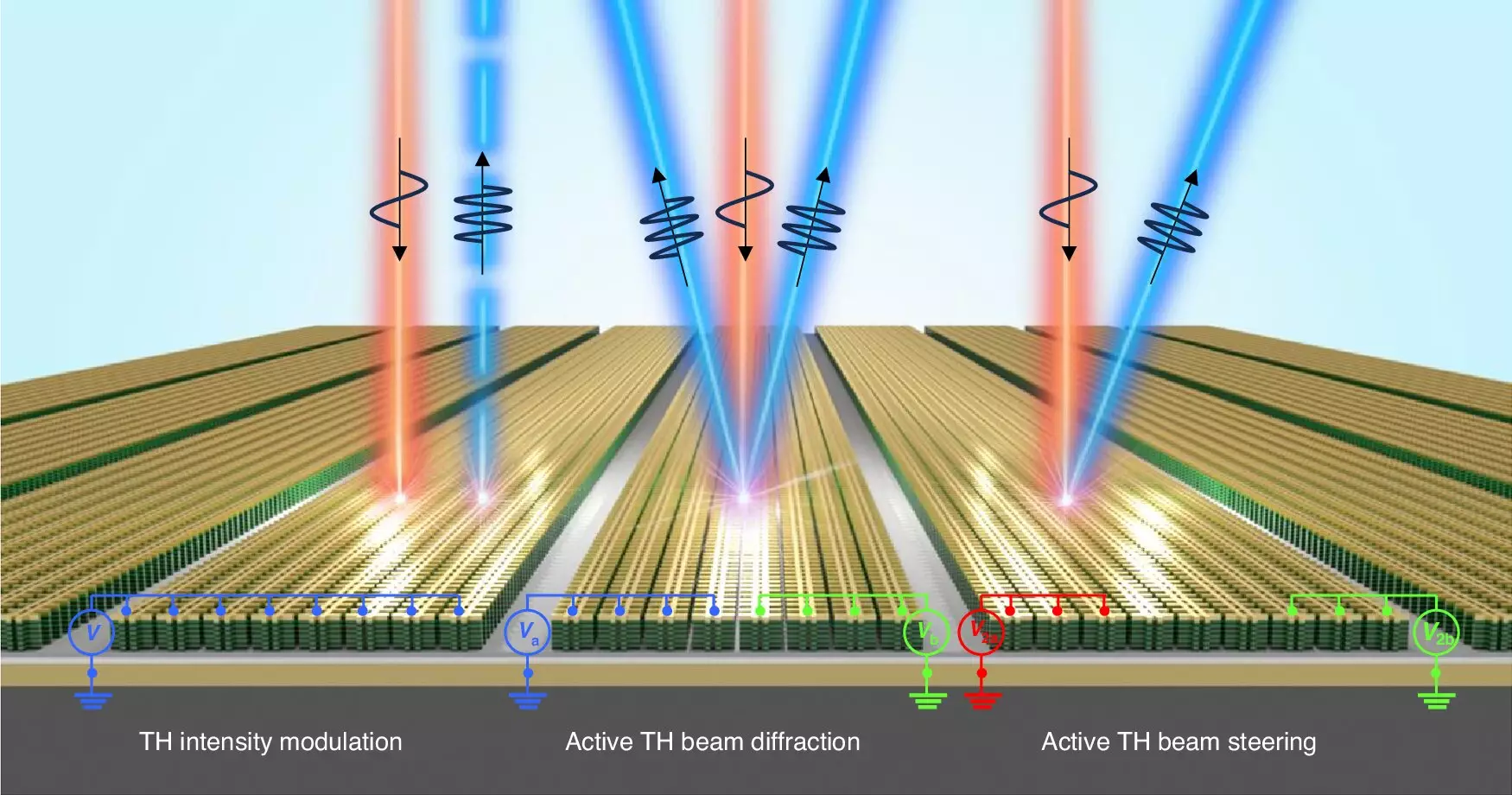Recent breakthroughs in nonlinear optical metasurface technology have the potential to revolutionize the fields of communication and diagnostics. These innovations are rooted in the creation of structures that are smaller than the wavelength of light, allowing for previously unattainable levels of control over light-matter interactions. These compact devices not only promise to enhance the capabilities of quantum light sources but also to improve medical diagnostic technologies fundamentally.
Led by Professor Jongwon Lee from the Department of Electrical Engineering at UNIST, a groundbreaking study has been published in *Light: Science & Applications*. This research introduces an electrically tunable third-harmonic generation (THG) methodology, utilizing intersubband polaritonic metasurfaces in tandem with multiple quantum wells (MQWs). The team achieved an extraordinary modulation depth of 450% for THG signals and accomplished an 86% reduction in zero-order THG diffraction. These results signify a remarkable leap forward in the field, enabling sophisticated functionalities in optical devices.
Innovative Features of the Metasurface
The study’s authors highlighted two particularly transformative aspects: local phase tuning and beam steering. By enabling phase adjustments greater than 180 degrees, as well as facilitating the steering of THG using phase gradients, this research is paving the way for active and adaptable nonlinear optical elements. The potential applications are extensive, ranging from dynamic holography to next-generation quantum sensors, illustrating the versatility of this emerging technology.
The Practical Implications
One of the most exciting prospects of this research is its implications for the design of lightweight, compact optical devices. The metasurfaces created in this study could lead to laser instruments thin enough to rival ordinary paper, presenting opportunities to integrate complex optics into everyday technology. The traditional barriers of size and weight in optical devices could become a relic of the past, allowing for advanced functionalities in a myriad of applications.
Unlike previous attempts in the realm of nonlinear optics, this study demonstrates a viable method for the electrical control of both second-harmonic generation (SHG) and independent modulation of intensity and phase in THG. Professor Lee noted the remarkable control these innovations afford, highlighting their potential uses in cryptography and communication technologies. Such advancements may indeed herald a new era for optical devices, wherein users can tweak light parameters with unprecedented ease.
The recent developments led by Professor Jongwon Lee and his team represent a significant stride in nonlinear optical research. The combination of a tunable metasurface and quantum well structures is not only pushing the envelope in optical device performance but also expanding the horizon of possible applications. As researchers continue to refine and explore these technologies, the implications for fields such as quantum communication and medical diagnostics are promising, potentially leading to the next generation of optical instruments designed for advanced, practical use.


Leave a Reply